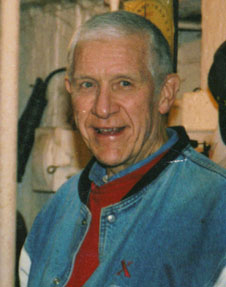The Musings of A Simple Country Man

By Hobie Morris
(Brookfield, NY – July 13, 2014) A popular, inherited from England, feature of American rural life for over 200 years has been the county fair; a tradition that flourished especially in the early years of the Republic, when America’s population was primarily rural. Fairs usually occurred at this time, following the harvest when the late autumn haze was on the hills.
For 166 years, or since Martin Van Buren’s presidency, and a decade before the Civil War, a county fair has been held in the town of Brookfield. A small rural community surrounded by high forested hills nestled in the remote southeast corner of Madison County in the heart of beautiful Central New York. Only one or two times was the fair canceled. Once during World War I, due to the threat of a highly contagious and deadly flu that was sweeping across America and the world.
In the fair’s early years it was held in several different locations around the village, eventually finding its present permanent home. On one occasion, in 1862, in the early years of the Civil War, the fair was held on a large grassy field in North Brookfield.
Incredibly, immediately after the Civil War there were two well attended and patronized fairs in tiny Brookfield, both being held on the same day within sight and sound of each other. Apparently the fairs were the result of strong political and other differences between local citizens. After half-dozen years or so the upstart fair folded up its tent for good.
The month when the fair was held also varied. While this year’s edition was held in early July, much more frequently it was held in September, usually around Labor Day. Sometimes, for unknown reasons, the fair was scheduled in the unpredictable month of October. One year a not that uncommon early snow storm and cold blustery wind had soggy tents and entries blowing and scattered all over the countryside.
The fair has prospered as well as struggled over the years. Its original agricultural emphasis has been in serious and noticeable decline for many years. Small family farms were once the backbone of these county and local fairs. Far reaching changes in the agricultural sector, rural population and serious competition from other forms of entertainment combined to make changes in county fairs inevitable.
Well within the memory of many local seniors are many vivid and happy recollections of fair time. It was the place to go as the first hint of fall permeated the air and the green leaves and crop foliage began to dry and dull in anticipation of the season ahead. Area families would spend many hours carefully planning entries listed in the thick premium book. Prize money often greatly helped families make it through the winter months looming ahead.
Labor Day was often the single largest fair day. A crowd of 15 to 20,000 people or more was not unheard of. On one such Labor Day, during World War II, a very young tow-headed boy who grew up to write this article, got separated from his parents. Eventually a couple of passing ladies heard crying in the back of his parents’ auto parked, along with hundreds of others, near the school building. I happily admitted I was the boy being sought. It should be pointed out that in the early days fair attendees often remained overnight in town. In fact, fair week was unquestionably the single largest source of yearly income. Liquid refreshments when Brookfield was a “wet” community were all liberally available at fair time.
Probably the greatest 19th century fair occurred in 1856, when the Black abolitionist Frederick Douglass came to Brookfield to speak during the fair. It was later reported that 10 to 12,000 people came to hear him. A monster crowd that almost overwhelmed the village of Brookfield’s several hundred residents. It was reported that horses, wagons, carriages were tied to every possible post, tree, buildings in the village and along the roads coming in. The house that Douglass stayed in still stands adjacent to the vacant area where the fair was held that year.
While today’s country fair can’t replicate its ancestor’s popularity and emphasis, it can, with hard working leaders thinking creatively, continue an American tradition that needs to be preserved to remind us of our connection with the earth and for a few days at least with each other on a personal shoulder to shoulder basis.
Again, these are only the random thoughts of a simple country man and his beautiful wife Lois, who a few years ago was the Madison County women’s hand milking champion, with a blue ribbon to prove it. And, yes, it was a real cow, a black and white Holstein.
Hobie Morris is a Brookfield resident and simple country man.
